
Silver Betel Box with lid and stand
Silver Betel Box with lid and stand
20th century
silver
47cm high
Stock no.: A5012
Silver Betel Box with lid and stand
This stunning ceremonial silver betel box comprises three independent components that are richly decorated in extravagant repoussé work with scenes from Buddhist folktales and floral scrollwork. The ornate tray rests on a pedestal with four legs in the shape of stylised lions with flaming tails. The pedestal base bears medallions with peacocks on them. Atop the tray lies a lid further decorated with floral scrolls and scenes from tales and a finial in the shape of a man in cast silver, who could be a warrior or hunter, with one arm raised and a weapon missing from his right hand.
The custom of chewing betel has been commonly practiced by men and women across South and Southeast Asia for thousands of years. Presenting a betel quid, prepared by placing sliced areca nut in a betel leaf, tobacco, spices, smeared with lime paste and rolled up, to guests was a sign of hospitality. People chew the areca nut for a number of reasons, including good digestion, a boost of energy, and a sense of euphoria. To prepare this, one needed a set of objects like areca nut scissors, a box to hold the lime paste, and the betel box. According to Owens, to own ceremonial silver betel box such as this one, ‘conferred status in Burmese society’ and it often the box would be placed on the ground, ‘in front of the formal portrait photographs of the last Konbaung kings, Shan Saohpas and high-ranking Burmese families’ (pp. 45-47).
Silver betel boxes are rarely found with their original pedestals, either because they did not survive or were not made with pedestals. This box features two panoramic story boards – one across the tray box and the other on the lid – with the same figural treatment, landscape elements, and decorative style in multiple panels. Both feature didactic stories from Buddhist lore across many panels. The scenes are all surrounded by entwined flowers and vines.
The tray box features a masterful rendition of scenes from the Vessantara Jataka, which is considered ‘the most sacred narrative in the Buddhist world’ and is commonly seen on Burmese silverwork (Owens, 165) and emphasises the importance of generosity and giving. Set in a hermitage in a forest, where Vessantara and his family are banished and living, we see the wicked brahmin Jujaka asking Vessantara for his two children Jali and Kanhajina as slaves, and Vessantara pouring water into Jujaka’s outstretched palm while his children hide and beg him not to give them away. Vessantara agrees, and Jujaka binds and beats the children, dragging them away. This happened while Madi or Madri, the children’s mother, is away collecting fruit. Out of pity for her and the anguish she would face on finding out about the loss of her children, two kind divine spirits attempt to prevent her from reaching home before sunset. This scene is depicted in one panel, where Madi is balancing a basket on her head and is warding off a lion and tiger that are trying to block her way in the forest. Jujaka would tie the children to a tree and make them lie on the ground, while he climbed a tree and slept in the branches, safe from wild animals. Another panel shows this scene where Jujaka is resting atop the tree while two kind divine spirits are shown holding the children. According to the tale, these spirits free the children every night to bathe, feed, and guard them.
The tray lid features scenes from the Sama Jataka or Syama Jataka, which is an allegorical story of filial piety, and is the third Jataka tale. This story follows Sama or Syama, a young boy, who looks after his blind parents, who live in the forest, and is shot with an arrow by a cruel king on the hunt for deer, greedy for venison. The lid shows scenes of Sama with his parents, collecting water in a jug surrounded by deer, and then the king speaking to Sama’s parents after killing him. In the end, he takes them to the body of Sama, and as all lament, he is brought back to life by the gods and his parents’ blindness is cured. Sama’s devotion, kindness, compassion for people and animals alike, and responsible nature make him an ideal character for a moralistic story.
Comparative materials:
Examples of other Burmese silver betel boxes can be found in Owens, David C. Burmese SIlver Art: Masterpieces Illuminating Buddhist, Hindu and Mythological Stories of Purpose and Wisdom. Marshall Cavendish International (Asia), 2020. p. 43, 46,48, 64, 65.
Bibliography:
Owens, David C. Burmese SIlver Art: Masterpieces Illuminating Buddhist, Hindu and Mythological Stories of Purpose and Wisdom. Marshall Cavendish International (Asia), 2020.
@AMIRMOHTASHEMI




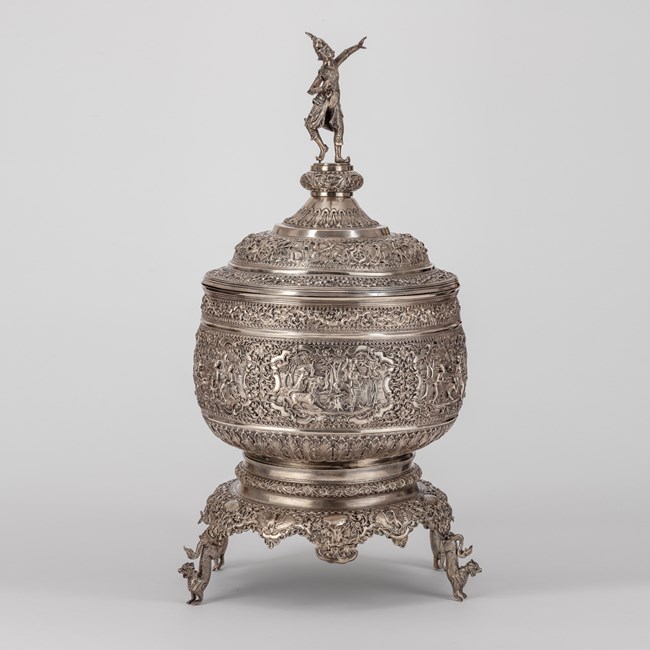

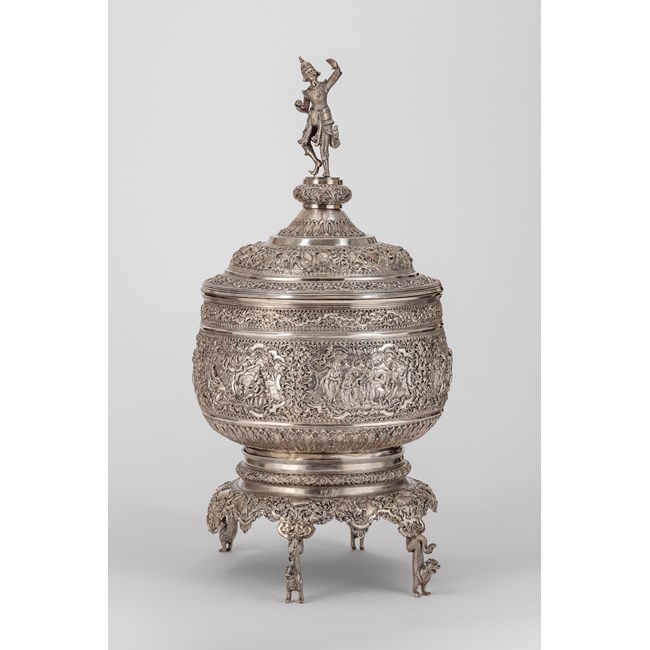
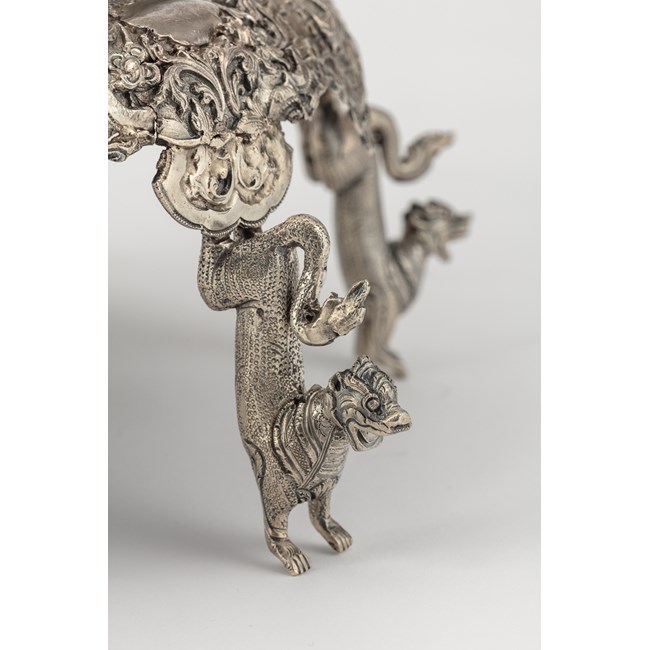
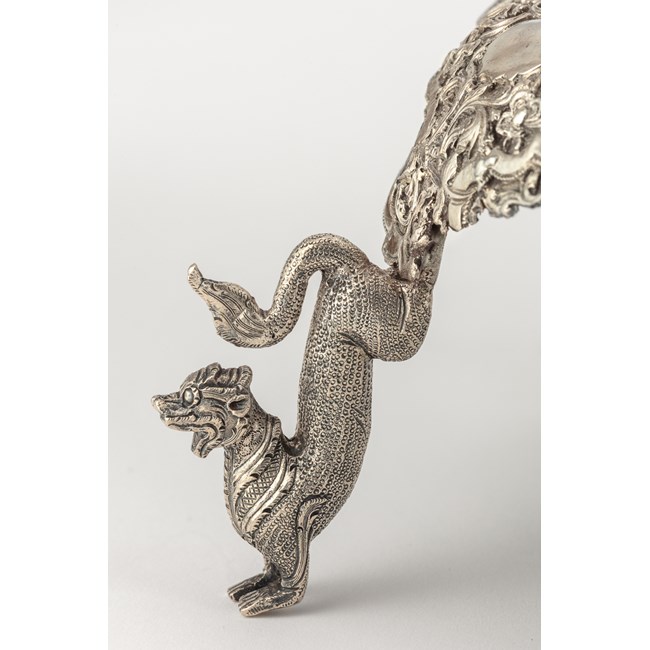
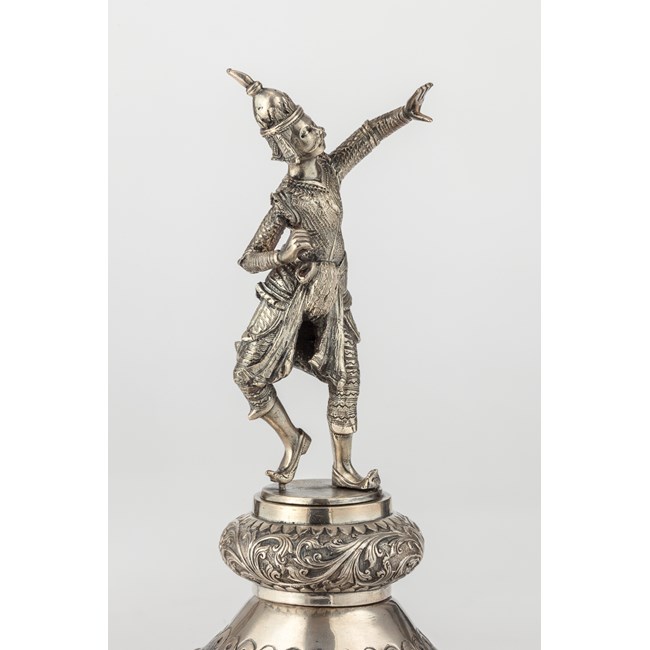
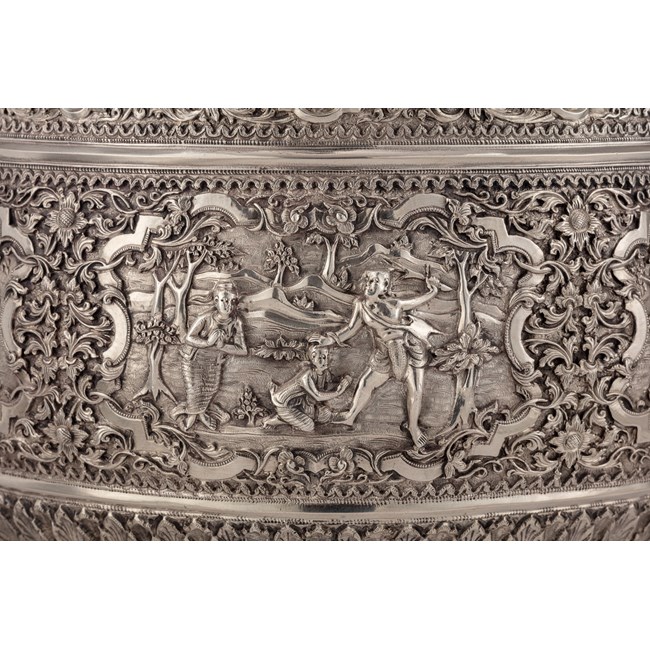
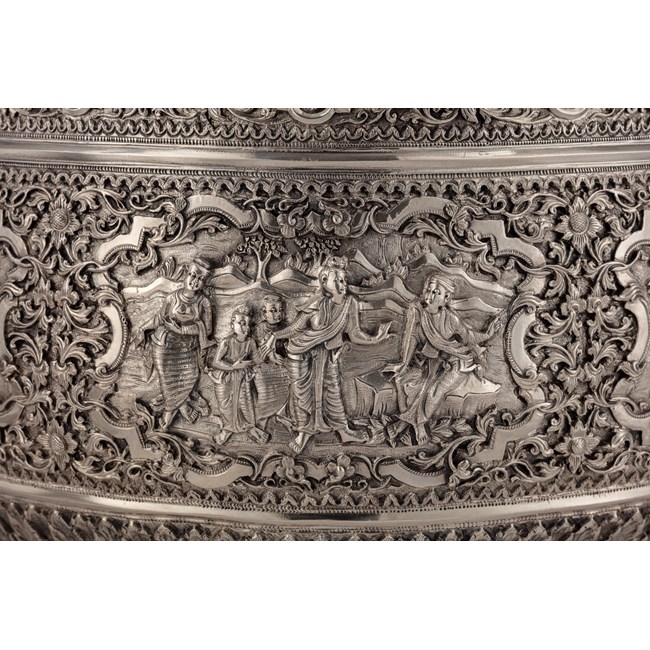
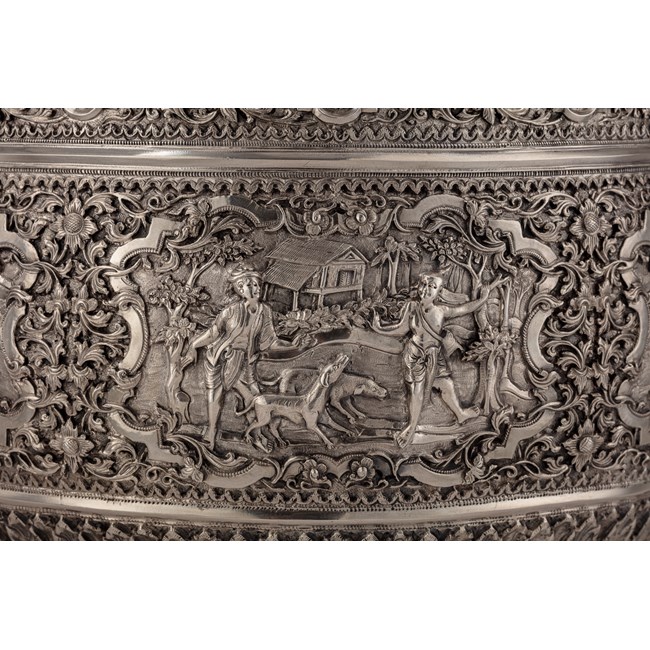



 instagram
instagram
